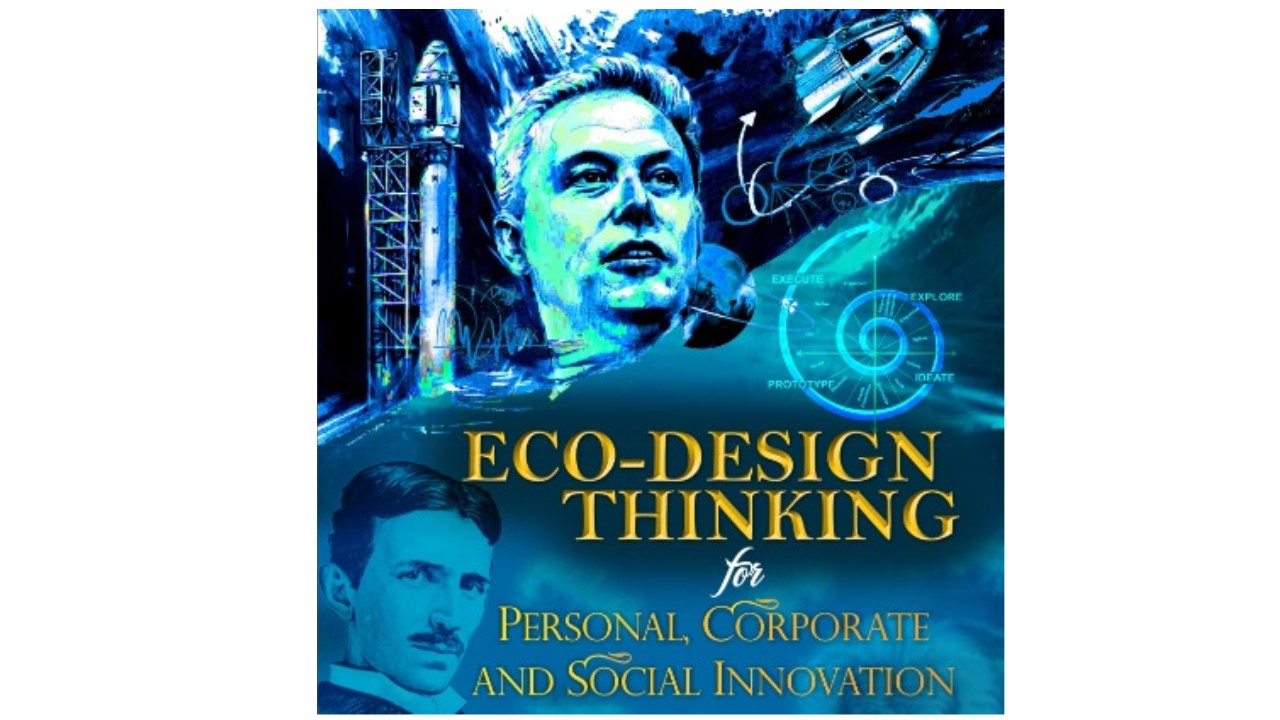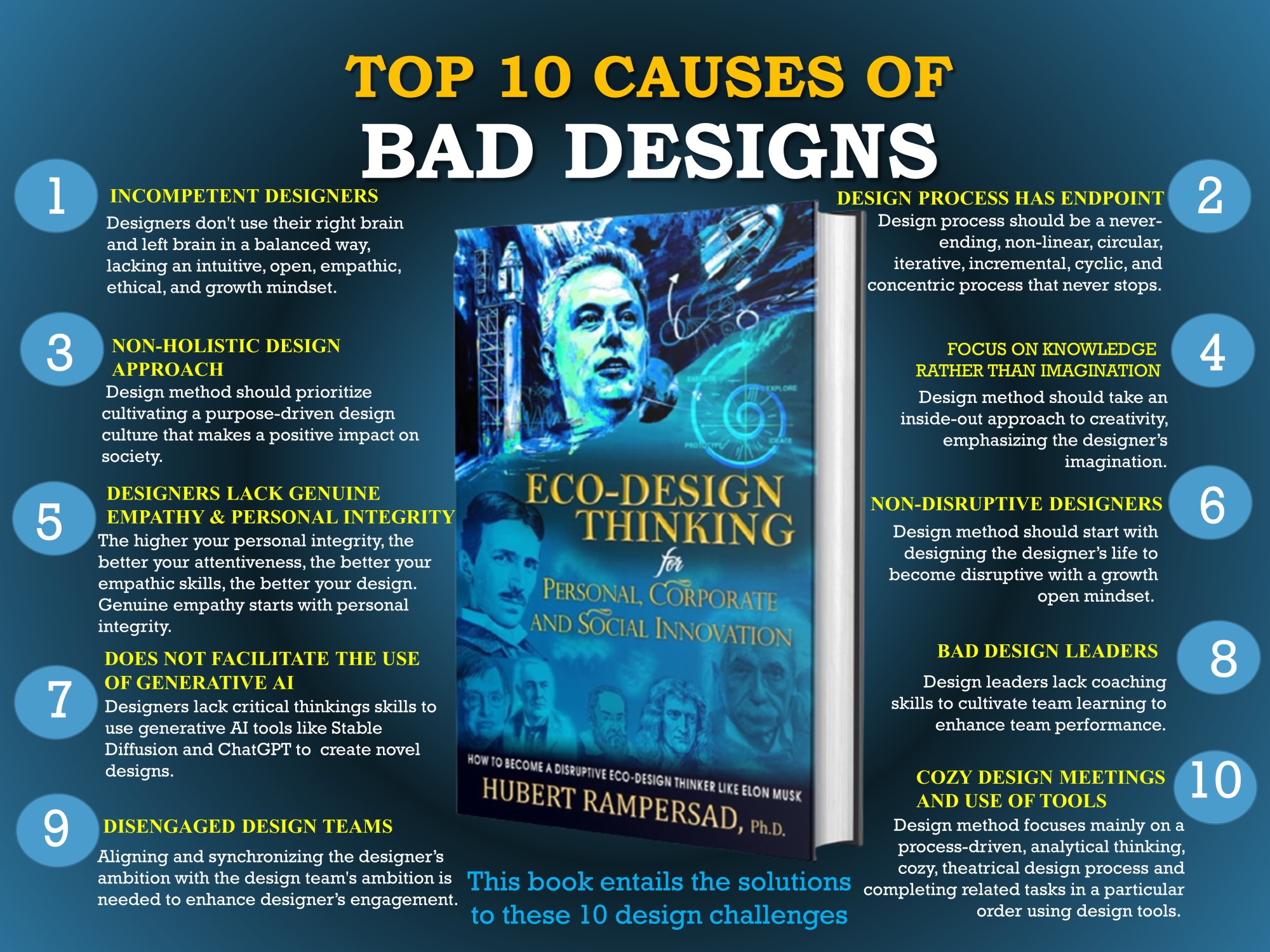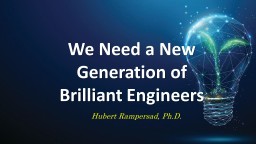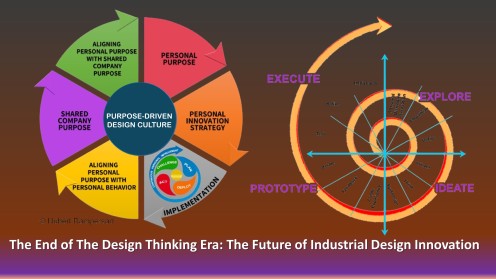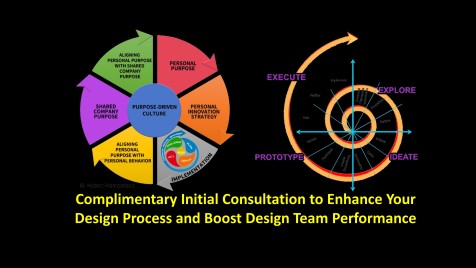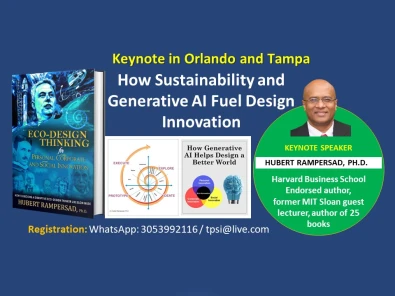How to Fix It
This article highlights the harmful consequences of poorly designed products that fail to consider sustainability, personal innovation, and generative AI. Some well-known examples of such designs include the botched vaccine rollout in America, Citibank’s loss of $500 million due to an unfriendly loan management tool, the $2 trillion F-35 project,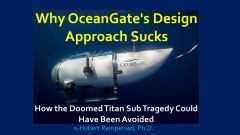 Boeing 737 Max airplane, the T-14 Armata Russian Tank, and the Samsung Galaxy Note 7. Please take the time to read my article “Why OceanGate’s Design Approach Sucks; How the Doomed Titan Sub Tragedy Could Have Been Avoided.” CEOs who prioritize their personal design choices over critical safety regulations, endangering human lives, can learn a valuable lesson from the tragedy of the Titan. This also applies to individuals like Elon Musk and companies like Boeing. Please review my article “How the Boeing 737 Max Incidents Could Have Been Avoided”.
Boeing 737 Max airplane, the T-14 Armata Russian Tank, and the Samsung Galaxy Note 7. Please take the time to read my article “Why OceanGate’s Design Approach Sucks; How the Doomed Titan Sub Tragedy Could Have Been Avoided.” CEOs who prioritize their personal design choices over critical safety regulations, endangering human lives, can learn a valuable lesson from the tragedy of the Titan. This also applies to individuals like Elon Musk and companies like Boeing. Please review my article “How the Boeing 737 Max Incidents Could Have Been Avoided”.

According to a congressional report, Boeing concealed design flaws in its 737 Max airplane from pilots and regulators to certify it as safe to fly. The report attributes the crashes of two aircrafts, which occurred within months of each other and claimed the lives of 346 individuals, to the US aircraft manufacturer’s shortcuts and pressure on regulators to overlook certain aspects of the airplane’s new design to compete with European competitor Airbus. The Boeing 737 Max had flaws in its design due to unreliable sensors and cut corners to save money. Some crashes were linked to the absence of warning lights and issues with pilot training and maintenance logs. Read: “Boeing lost its way. Other companies should take heed.” It’s become clear that Boeing’s problems run far more profoundly. They expose decades of American corporate philosophy gone awry. Boeing is a quintessential example of America’s rotting business culture over the past 40 years.
Top 10 causes of bad designs:
- INCOMPETENT DESIGNERS: Designers don’t use their right brain and left brain in a balanced way, lacking an intuitive, open, empathic, ethical, and growth
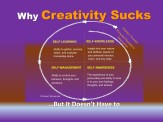 mindset. Read “Why Creativity Sucks“.
mindset. Read “Why Creativity Sucks“. - DESIGN PROCESS HAS ENDPOINT: The design process should be a never-ending, non-linear, circular, iterative, incremental, cyclic, and concentric process that never stops.
- NON-HOLISTIC DESIGN APPROACH: The design method should prioritize cultivating a purpose-driven design culture that positively impacts society.
- FOCUS ON KNOWLEDGE RATHER THAN IMAGINATION: The design method should take an inside-out approach to creativity, emphasizing the designer’s imagination.
- DESIGNERS LACK GENUINE EMPATHY AND PERSONAL INTEGRITY: The higher your personal integrity, the better your attentiveness, the better your empathic skills, the better your design. Genuine empathy starts with personal integrity.
- NON-DISRUPTIVE DESIGNERS: The design method should start with designing the designer’s life to become disruptive with a growth-open mindset.
- DOES NOT FACILITATE THE USE OF GENERATIVE AI: Designers lack critical thinking skills to use generative AI tools like Stable Diffusion and ChatGPT to create novel designs.
- BAD DESIGN LEADERS: Design leaders lack the coaching skills to cultivate team learning and enhance team performance.
- DISENGAGED DESIGN TEAMS: To enhance the designer’s engagement, aligning and synchronizing the designer’s ambition with the design team’s ambition is needed.
- COZY DESIGN MEETINGS AND USE OF TOOLS: The design method focuses mainly on a process-driven, analytical thinking, cozy, theatrical design process, and completing related tasks in a particular order using design tools.
The figure below illustrates the top 10 reasons behind these bad designs.
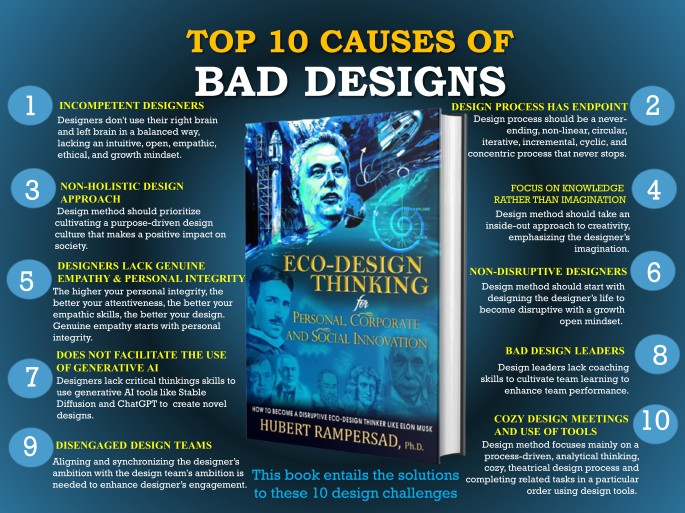
We Need a New Generation of Brilliant Engineers
We need a new generation of brilliant engineers with a new mindset to design a better world and create a vibrant future. Engineering colleges and universities today do not commonly teach the skills that future engineers will need. Engineers must possess skills like creativity, imagination, agility, critical thinking, and sustainability to become visionary and innovative entrepreneurial leaders or to design innovative products. These skills are not typically associated with engineering, but the rapid rate of technological change has made most college and university courses obsolete by the time students graduate. STEM programs give engineers insights into science, technology, engineering, and mathematics. However, they often fail to nurture the holistic, authentic, and imaginative qualities essential for tomorrow’s engineers. Read my article “We Need a New Generation of Brilliant Engineers.”
We Also Need a New Design Method
The world has no shortage of complex problems that must be addressed. Therefore, we need to evolve beyond design thinking. The design industry needs a radical new design approach that goes far beyond the original design thinking methodology. It requires a sustainable, purpose-driven design culture rather than relying on a theatrical and ad-hoc design process that involves cozy design meetings with sticky notes and fun design tools. Please read my article “The End of The Design Thinking Era: The Future of Industrial Design Innovation.”
Corporate America should shift its focus instead of relying solely on the theatrical design thinking approach. What’s needed is a purpose-driven design culture in tech companies that prioritizes profitability and aims to positively impact society. This new holistic design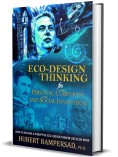 approach is based on my latest book, “Eco-Design Thinking for Personal, Corporate, and Social Innovation.” It is also based on my experience as a senior design innovation coach at ASML, the most crucial tech company in the world and Europe’s most valuable tech firm, the only tech company in the world with a sustainable design-driven culture.
approach is based on my latest book, “Eco-Design Thinking for Personal, Corporate, and Social Innovation.” It is also based on my experience as a senior design innovation coach at ASML, the most crucial tech company in the world and Europe’s most valuable tech firm, the only tech company in the world with a sustainable design-driven culture.
Personal Disruptive Innovation Framework and Roadmap
Personal disruptive innovation is an innovative approach that unlocks your creative potential by cultivating a strong growth mindset, creating new unique opportunities, disrupting your current target market, and allowing you to make a significant social impact. This model involves five steps to promote authenticity, integrity, and sustainability, as shown in this model: 1. Personal Ambition, 2. Personal Brand, 3. Personal Innovation Strategy, 4. Implementation, and 5. Personal Integrity & Empathy.

This model has been described in detail in my article “Nurturing Authenticity, Integrity, Empathy, and Critical Thinking: A 5-Step Guide“. To be discussed in the next section, the eco-design thinking model starts with personal disruptive innovation to understand, explore, redefine, and redesign yourself before solving the design problem. You need to become innovative and empathic first to develop innovative designs for the end users. You need to develop disruptive skills first. You need to reinvent and redesign yourself first to become a disruptor. In the upcoming section, I will discuss the eco-design thinking model, which emphasizes personal disruptive innovation as the first step towards understanding, exploring, redefining, and redesigning oneself before solving any design problems. Being innovative and empathic is essential to developing innovative designs that cater to the end users’ needs. Therefore, developing disruptive skills and reinventing oneself to become a critical thinker is necessary. Read my articles “Crafting Your Authentic Personal Brand: A 5-Step Guide” and “Cultivating Critical Thinking in the Age of AI.“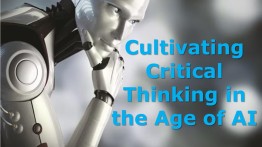
Personal Disruptive Innovation and Generative AI
With generative AI being the newest innovation, it is essential to concentrate on personal disruptive innovation to keep up with and aid generative AI. Read the recent Harvard Business Review Article “How Generative AI Can Augment Human Creativity,” which explored the potential of different generative AI tools to stimulate creative thinking by merging numerous ideas to generate even stronger ones. These AI tools can encourage the exploration of new problem-solving methods, create innovative solutions, and assist in evaluating ideas using ChatGPT. Additionally, they can support the refinement of ideas and facilitate collaboration among end-users. However, the article omitted the crucial aspect of holistically integrating these AI tools into a new holistic design process to use them effectively.
You can now create your own custom ChatGPTbot. Designers can leverage GPTs to enhance the customer experience by delivering personalized recommendations and content. The customized AI algorithms can analyze user behavior and preferences to increase engagement and satisfaction. By understanding the user better, designers can make better decisions about product features and improvements. Customized AI is developing and implementing AI solutions tailored to a design team’s unique needs and goals. These solutions can range from AI-powered tools that aid market research and product design to AI-driven analytics platforms that provide real-time insights. GPTs are tailored versions of OpenAI’s ChatGPT.
It is widely understood that generative AI will not replace humans entirely. Therefore, it is essential to ensure that humans can work alongside these innovative tools in harmony and efficiently use them. Launching a new comprehensive and holistic design thinking model, including the personal disruptive innovation methodology, that integrates generative AI and genuine sustainability would be worthwhile.
Is it not better to begin the new design process by first developing innovative, intelligent, truthful, and empathic designers who can use generative AI optimally in the later stages? It seems odd that traditional design models neglect this crucial initial step and instead prioritize empathizing with end users. Shouldn’t we revise the design process to create a more sustainable world in the age of generative AI? In the following section, I will introduce a new design model to help companies, academic institutions, governments, and militaries make better use of generative AI in their design process. This will lead to more innovative, imaginative, disruptive, empathetic, and creative ideas.
Eco-Design Thinking Model: A Generative AI-Friendly Design Process
We must adopt a new design method that is better suited for generative AI to design a more sustainable world. This method should prioritize creating intelligent, resilient, empathetic, and honest designers. To achieve this goal, I have introduced eco-design thinking. This creative process involves empathizing with yourself, the end user, and the environment to generate innovative, imaginative, empathetic, and disruptive design ideas. The new model is depicted in the figure below and consists of four stages: Explore, Ideate, Prototype, and Execute. It is an iterative, incremental, cyclic, and concentric process of exploring, ideating, prototyping, and executing (Rampersad, 2022). It starts with designing the designer’s life. AI-powered tools that generate content can be helpful in every stage of the design process. Eco-design thinking is a circular and iterative process that has no endpoint. The model consists of various stages that may form iterative loops and do not need to follow a specific sequence. Every iteration brings forth fresh insights. It is recommended that this process be repeated until the issues of the designer and end-user reach an acceptable level. Eco-design thinking is a continuous and circular process that requires testing and refining your design while empathizing with yourself, the users, and the environment. At any design stage, generative AI tools can produce the best empathic design customized to the end-user’s needs and the environment. Here’s an excellent storyboard example where (Eapen et al., 2023) utilized the Stable Diffusion generative AI tool to create a design for a flying car.
Eco-design thinking is a circular and iterative process that has no endpoint. The model consists of various stages that may form iterative loops and do not need to follow a specific sequence. Every iteration brings forth fresh insights. It is recommended that this process be repeated until the issues of the designer and end-user reach an acceptable level. Eco-design thinking is a continuous and circular process that requires testing and refining your design while empathizing with yourself, the users, and the environment. At any design stage, generative AI tools can produce the best empathic design customized to the end-user’s needs and the environment. Here’s an excellent storyboard example where (Eapen et al., 2023) utilized the Stable Diffusion generative AI tool to create a design for a flying car.
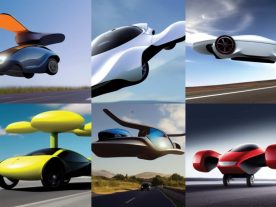
Deficiencies in Elon Musk’s design methodology
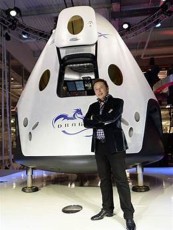 The eco-design thinking model resembles Elon Musk’s iterative design process. This technique involves creating a product or process through a cyclic process of prototyping, evaluating, analyzing, and refining. Rather than investing in a giant, costly spaceship to transport humans to Mars, Musk created smaller rockets and continually improved his design. Iterative design, in the case of SpaceX, includes checking the spacecraft, finding potential defects, repairing them, and developing the project.
The eco-design thinking model resembles Elon Musk’s iterative design process. This technique involves creating a product or process through a cyclic process of prototyping, evaluating, analyzing, and refining. Rather than investing in a giant, costly spaceship to transport humans to Mars, Musk created smaller rockets and continually improved his design. Iterative design, in the case of SpaceX, includes checking the spacecraft, finding potential defects, repairing them, and developing the project.
Incorporating personal disruptive innovation and eco-design thinking into Elon Musk’s iterative design process could lead to more innovative, better, cheaper, and faster rocket designs. All designers at SpaceX must adopt the mindset of disrupting themselves, just like Musk. Personal disruptive innovation is the crucial missing component in his design process. Without this innovative start to the design process, designers may struggle to keep up with generative AI and miss out on opportunities to develop more imaginative, empathic, and creative design ideas. It’s not surprising that his Mars rocket failed.
The process of eco-design thinking involves exploring, ideating, prototyping, and executing different aspects of a design. Each iteration is then reviewed to identify additional requirements, and the process is repeated to produce a new and improved version of the product or service. The model involves creating a rough product or process in one iteration, reviewing it, and then improving it in the next iteration until it is complete. Based on the results of incremental prototyping and execution, changes and refinements are made to the most recent iteration of the design.
To create a good design, it’s essential to first explore your life, empathize with the end user, and research the environment. Once you’ve identified the design problem and user needs, you can generate ideas to meet those needs. From there, you’ll develop a prototype of the finished product or service and test it to ensure it’s meeting the requirements in the best possible way. If adjustments need to be made based on the test results, you’ll adjust the design accordingly and execute the solution. If the prototype doesn’t meet the need, you’ll create a new one and start the process again until the end user is satisfied. ……….. Please continue reading “How Generative AI Helps Design a Better World.”
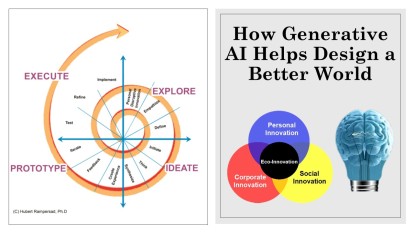 Here are some benefits of the new eco-design thinking model:
Here are some benefits of the new eco-design thinking model:
- Before delving into design issues, exploring and redesigning your own life is essential. This approach leads to more intelligent and innovative designs and better use of generative AI, resulting in better designs.
- The use of generative AI in the initial stage of the design process promotes a culture of personal disruptive innovation, creating unique and empathetic designs.
- A high level of personal integrity and a designer’s empathy is necessary to achieve superior design quality.
- Before starting to build your product or service, creating a thoughtful and innovative design that considers empathy is possible. This approach can lead to faster design implementation.
- Design performance is enhanced while design throughput time is shortened, all thanks to the innovative and happy designers constantly learning as a team. This ultimately improves the overall quality of the designs.
- By gradually building and enhancing the product or process and detecting defects early on, you can achieve faster design outcomes.
- By utilizing generative AI and compelling storytelling, you can obtain more reliable user feedback. Implementing a personal eco-design thinking branding blueprint can improve design quality.
Introducing the Eco-Design Thinking Tool Kit, which provides support for the Eco-Design Model
Additional design tools have been incorporated to aid and streamline the implementation of the new Eco-Design Thinking approach. These tools have been aligned with the model to boost its efficiency:
- Personal Disruptive Innovation Methodology for innovative ideas and more imaginative designs.
- Generative AI tools like Midjourney, ChatGPT, and Stable Diffusion.
- Personal Innovation Strategy: to become more innovative and intelligent.
- Personal Eco-Design Thinking Branding System to enhance storytelling and empathy.
- Breathing and Silence Exercises to enhance imagination.
- Personal Integrity Methodology: to exhibit empathic behavior effectively and become a better human being.
- Eco-Design Thinking Code of Ethics for ethical designs that foster empathy.
- Designer’s Alignment and Engagement in the Design Team: to achieve better performance from the design team, it is essential to ensure that the designer is happy and engaged first, as this will ultimately lead to a better experience for the end user.
Hubert Rampersad, Ph.D.
Complimentary Initial Consultation to Enhance Your Design Process and Boost Design Team Performance
Read also Building a Purpose-Driven Design Culture in Tech Companies.
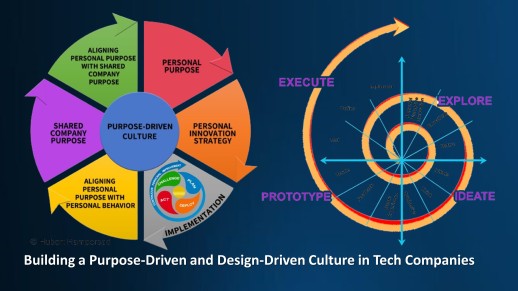
To gain more knowledge about this subject, you may consider attending his Orlando-Tampa Live Events:
Building a Purpose-Driven Design Culture in Tech Companies
“How Sustainability and Generative AI Fuel Design Innovation.”
Hubert Rampersad, Ph.D., founded the Center of Excellence in Human-Centered and Purpose-Driven Innovation in Orlando. He is a Dutch-American visionary leader in innovative solutions for genuine sustainability, disruptive design innovation, critical thinking in the age of AI, human-centered and purpose driven AI, and entrepreneurial leadership. He holds a Ph.D. in Innovation Sciences, an MSc in Technology Engineering & Robotics, and a BSc in Mechanical Engineering from leading accredited universities in the Netherlands (Delft University of Technology, Eindhoven University of Technology). He is a well-known futurist, advocating for genuine sustainability on a global scale. With extensive knowledge and expertise, he has authored 25 books on the topics above in many languages and is highly regarded for his insights in these fields. One of his books, “Total Performance Scorecard,” has been published in 20 languages. Dorothy Leonard, an innovation professor at Harvard Business School, wrote the book’s foreword. Rampersad has also previously served as a guest lecturer at MIT Sloan and was featured in BusinessWeek. He was a senior design innovation coach at ASML, the most important tech company in the world and “Europe’s most valuable tech firm“.
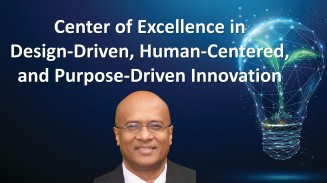
Orlando, Florida | tpsi@live.com | Phone/WhatsApp: +13053992116
